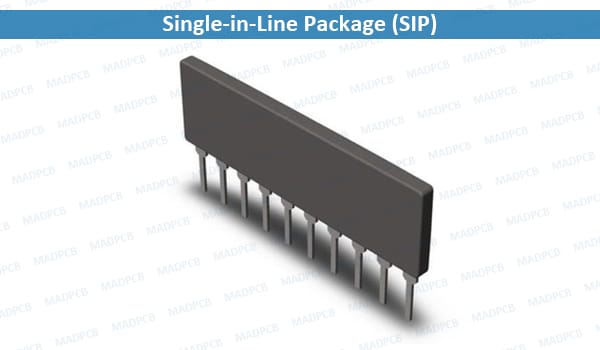What’s SIP Package?
Single-in-Line Package (SIP) is an IC package that has a single row of leads protruding from the bottom of its flat body. The package containing several electronic components (generally resistors). It is not as widely used as dual-in-line packages such as the PDIP and the CerDIP because of its limited number of pins. SIPs are often used in packaging networks of multiple resistors.
Most small-form SIPs are parallel-array devices of common value components (i.e. diode, resister arrays). Large-form SIPs are usually hybrid circuits (i.e. timers, oscillators, etc.). The SIP body can be either plastic or ceramic. The component has been properly oriented and all leads are fully inserted in the termination holes of the printed wiring board (PWB) with the lead standoff step in contact with the lands. The component has been properly installed before PCB assembly soldering. The chip’s notch/paint stripe, which identifies pin 1, is lined up with the silkscreen pattern. A square-shaped solder pad on the printed wiring pattern may also be used to identify pin 1.
The lead counts range from 4 to 64. SIPs have a body width of either 300 mils or 600 mils. The lead pitch is typically 100 mils.
| Properties of Some Examples | ||||
| Lead Count | Width | Length | Thickness | Lead Pitch |
| 4 | 300 mils | 375 mils | 130 mils | 100 mils |
| 8 | 300 mils | 750 mils | 130 mils | 100 mils |
| 9 | 300 mils | 890 mils | 130 mils | 100 mils |
| 10 | 300 mils | 1020 mils | 130 mils | 100 mils |
| 14 | 600 mils | 1450 mils | 130 mils | 100 mils |
| 24 | 600 mils | 2425 mils | 130 mils | 100 mils |

